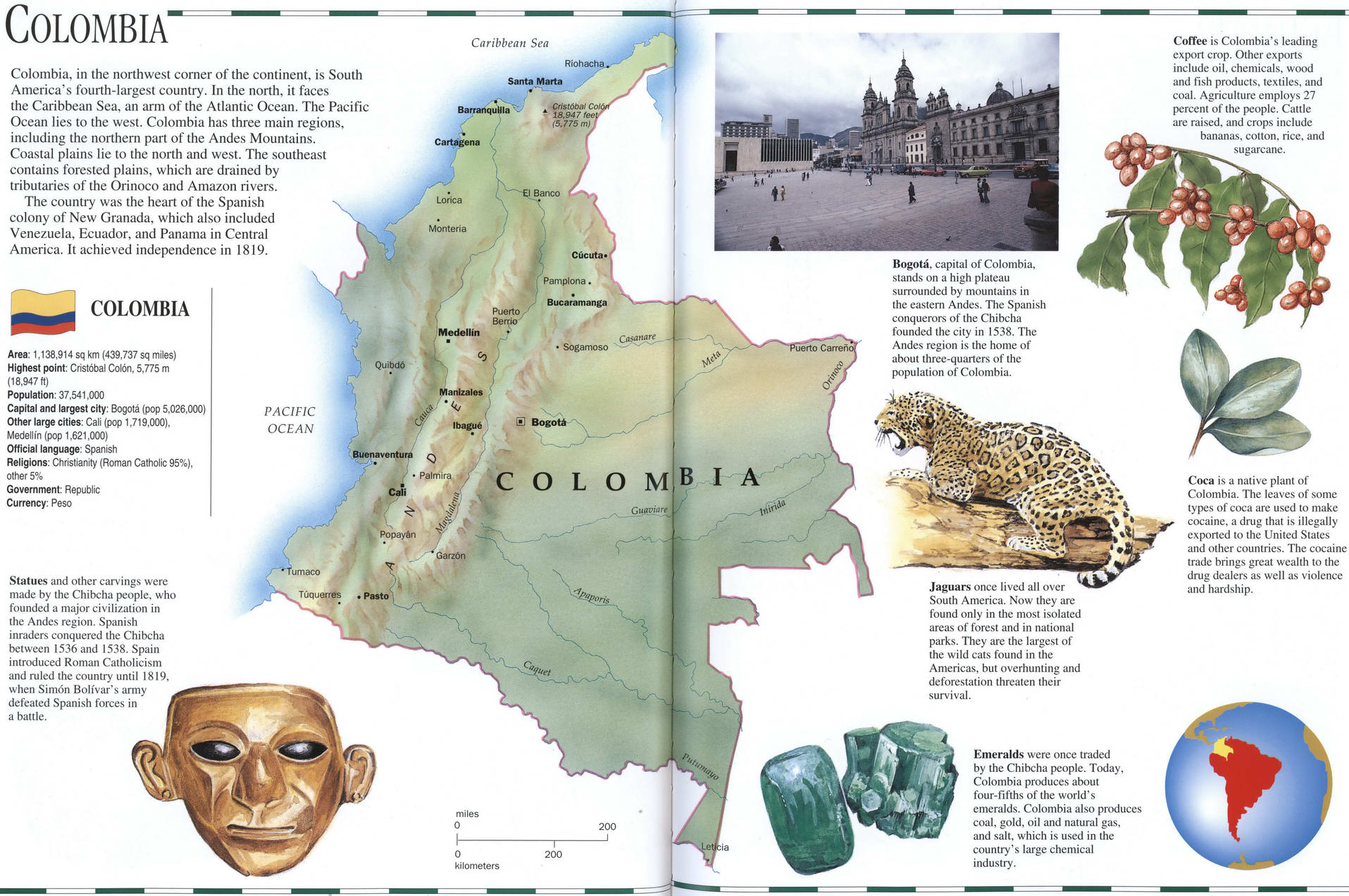Colombia geographic map. Detailed map of Colombia with a brief geographical description. Colombia on the world map.
Geographical map of Colombia. Detailed map of Colombia with a brief geographical description. Colombia on the world map.

Geographic description of Colombia
Colombia, in the northwest corner of the continent, is South America's fourth-largest country. In the north, it faces the Caribbean Sea. an arm of the Atlantic Ocean. The Pacific Ocean lies to the west. Colombia has three main regions, including the northern part of the Andes Mountains. Coastal plains lie to the north and west. The southeast contains forested plains, which arc drained by tributaries of the Orinoco and Amazon rivers.
The country was the heart of the Spanish colony of New Granada, which also included Venezuela. Ecuador, and Panama in Central America. It achieved independence in 1819.
COLOMBIA highlights
Coffee is Colombia's leading export crop. Other exports include oil. chemicals, wood and fish products, textiles, and coal. Agriculture employs 27 percent of the people. Cattle are raised, and crops include bananas, cotton, rice, and sugarcane.
Area: 1,138.914 sq km (439,737 sq miles) Highest point: Cristbbal Colon, 5,775 m (18,947 ft)
Population: 37,541,000
Capital and largest city: Bogota (pop 5.026,000)
Other large cities: Cali (pop 1.719.000).
Medellin (pop 1.621,000)
Official language: Spanish
Religions: Christianity (Roman Catholic 95%). other 5°.
Government: Republic Currency: Peso
Statues and other carvings were made by the Chibcha people, who founded a major civilization in the Andes region. Spanish inraders conquered the Chibcha between 1536 and 1538. Spain introduced Roman Catholicism and ruled the country until 1819. when Simon Bolivar's ar defeated Spanish forces i a battle.
Bogota, capital of Colombia, stands on a high plateau surrounded by mountains in the eastern Andes. The Spanish conquerors of the Chibcha founded the city in 1538. The Andes region is the home of about three-quarters of the population of Colombia.
Jaguars once lived all over South America. Now they are found only in the most isolated areas of forest and in national parks. They arc the largest of the wild cats found in the Americas, but overhunting and deforestation threaten their sun ival.
Emeralds were once traded by the Chibcha people. Today. Colombia produces about four-fifths of the world's emeralds. Colombia also produces coal. gold, oil and natural gas. and salt, which is used in the country's large chemical industry.
Coca is a native plant of Colombia. The leaves of some types of coca are used to make cocaine, a drug that is illegally exported to the United States and other countries. The cocaine trade brings great wealth to the drug dealers as well as violence and hardship.
